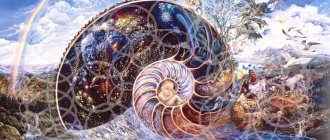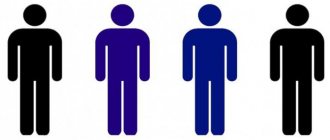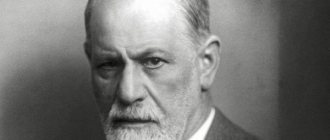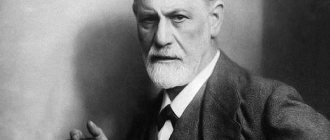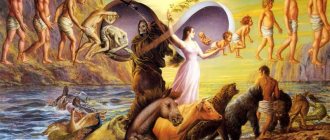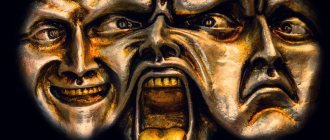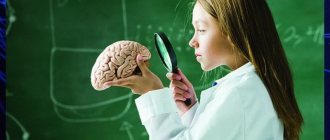The name of the Austrian scientist Sigmund Freud is perhaps one of the most famous in the modern world. He is known even to those who have never opened his works, not to mention small articles. The most commonly heard are the famous Freudian slips; people like to remember his name when they see meaningful oblong objects, such as a cigar or banana. The concept of the unconscious is also often recalled. However, not everyone can accurately explain its essence. In this article we will discuss the psychology of the unconscious, its manifestations, as well as the theory of its follower Jung.
Sigmund Freud
So, this is an Austrian neurologist who became the founder of psychoanalysis. His ideas still cause constant discussions, both in scientific and lay circles. Of course, he became an innovator in the field of psychiatry.
Let's give a short biographical information. Freud was born in 1856 in Freiburg into the family of a textile merchant. Soon after Sigmund's birth, the family had to move to Vienna. From childhood, great hopes were placed on the boy, and he read completely non-children's literature - Kant, Hegel, Shakespeare. In addition, he was very good at learning foreign languages.
After studying at the gymnasium, he entered the medical faculty, but did not feel any desire for this field of science. In fact, the young man chose for himself the lesser evil among the traditional fields of activity for Jews of that time - trade, medicine and law. After graduation, Sigmund intended to continue his academic career, but was forced to give preference to work and soon opened his own office, in which he worked as a neurologist.
In 1885, Freud got an internship with the psychiatrist Charcot, from whom he adopted the technique of hypnosis. In addition, he began to use conversation when working with patients, allowing patients to fully express their emotions. This method will later be called the “free association method”. He allowed the insightful doctor to understand the problems of patients and free them from neuroses.
Gradually, Freud began to publish his books, which first caused rejection and then wide resonance in society: “The Interpretation of Dreams”, “Psychopathology of Everyday Life”, etc. A circle of students formed around him, among whom the famous split occurred in 1910. The main stumbling block was the Freudian idea that the psychoses of the human personality are associated primarily with the suppression of sexual energy.
Sigmund Freud married relatively late and had six children. The famous psychoanalyst died of cancer in 1939.
Humanistic psychology of E. Fromm
A fundamentally new addition to neo-Freudian psychology is the teaching of one of the theorists of neo-Freudianism - psychoanalyst and sociologist Erich Fromm.
It was he who developed radical humanistic psychoanalysis to transform man and society. He sought to understand the laws governing the life of an individual, as well as the patterns underlying social development.
Fromm considered the severance of natural human connections with nature to be the main existential contradiction, representing the main problem of human existence. Based on such a contradiction, according to Fromm, existential and historical dichotomies can be formed.
Fromm considered existential dichotomies to be contradictions that lie at the basis of human existence itself and cannot be annulled. Such dichotomies are located between life and death, and they are also characterized by the impossibility of implementation due to the short duration of its existence.
Historical dichotomies are not a necessary part of human existence. They can be formed and destroyed in the course of human history. Fromm considered the contradictions of this group to be the dichotomies of various historical forms of existence of society and human capabilities necessary for the true realization of their nature at a certain time stage.
Concept of the unconscious
To be fair, it must be said that Freud was far from the first to come up with the idea that a person does not fully control his actions, that there is something in him that forces him to act unconsciously or even irrationally. The idea that the basis of many mental disorders was sexual repression was also not new. Freud's aforementioned teacher, the French psychiatrist Charcot, already expressed this idea.
The merit of the Austrian psychoanalyst is as follows. He was the first to say that a person’s consciousness is only a small part of his personality compared to the huge number of unconscious drives. In order to try to understand and cope with them, the help of an astute psychoanalyst is necessary.
Furthermore, Freud argued that these forces were entirely sexual in nature, which he called “libido.” It becomes active, according to the scientist, from the very first years of human life.
Sigmund Freud's theory
First, let's talk about the structure of personality in the concept of psychoanalysis. So, according to Freud’s theory, personality consists not only of a person’s consciousness, but of several interacting components.
The super-ego (super-ego) is an unconscious part that is acquired even before the appearance of speech in a person. It includes various norms of behavior, taboos and prohibitions formed by culture. This also includes all kinds of family prohibitions, which cause the individual to feel guilty and painfully afraid.
The id (It) is also the unconscious and most primitive part, which includes all kinds of desires and libido. These are extremely ancient, archaic drives that are mostly aggressive and filled with sexuality.
The ego (I) is a conscious component that reacts to what is happening in reality and helps a person adapt to it. It is a kind of intermediary between two other parts, both of which are unconscious. The ego is forced to constantly bifurcate in order to ensure the interaction of the Super-Ego and Id, between the biological desires inherent in everyone and the moral standards that society imposes.
In principle, we can consider two main aspects of the unconscious according to Freud. One of them, the unconscious and non-verbalized part, is an integral element of the human psyche. Thus, the latter is divided into two disproportionate (this will be discussed later) parts. The other side is divided, in turn, into two ego states - Super-Ego and Id.
Psychoanalysis of S. Freud. The problem of the unconscious. Freudianism
Psychoanalysis.
One of the most influential ideological movements of the twentieth century. is psychoanalytic philosophy, or Freudianism. The founder of psychoanalysis in its classical form was the Austrian psychologist and psychiatrist S. Freud. Freud's views are set out in his works: “The Interpretation of Dreams” (1899), “Beyond the Pleasure Principle” (1920), “The Ego and the Id” (1923), “Totem and Taboo” (1913), “The Future of an Illusion” ( 1927), “Dissatisfaction in Culture” (1930), etc.
Psychoanalysis is a special method of therapy in the practice of treating neuroses, the foundations of which were laid by S. Freud. On the basis of psychoanalysis, a number of scientific movements arose in psychology and psychiatry of the twentieth century. Some of them can be characterized not only as highly specialized within the relevant sciences, but also as psychoanalytic philosophy: ideas and discoveries made in the field of psychology and psychiatry received a philosophical generalization here.
The main ideas of psychoanalytic philosophy are:
1) the fundamental position of psychoanalysis is the role of the unconscious in people’s lives. Before Freud, the mental sphere was identified only with the conscious sphere. Therefore, one of his most important achievements can be considered the introduction into the field of scientific consideration of the concept of the “unconscious” (“It”). He introduced a new dimension to philosophy. From the point of view For Freud, the unconscious is behind many of our actions and, above all, behind fantasies, dreams, slips of the tongue, and forgotten impressions. It is the unconscious that determines the sphere of consciousness and has a powerful, sometimes hidden, impact on it.
In the structure of the human psyche, he identifies the following areas:
a) the unconscious (“It”, “Id”) – the defining deep plane of the human psyche, functions on the basis of innate, natural, genetically primary phenomena. These are desires and attractions that have been repressed from the realm of consciousness, the main place among which is occupied by sexual ones. This is an immoral and selfish beginning in a person. The “pleasure principle” dominates in it. Freud introduces into his theory the concept of two “primary urges” - the life instinct “Eros” and the death instinct “Thanatos”. The forces of Eros play a life-building, optimistic role, which fight against the desire of living matter to return to a simpler, inorganic state from which it arose;
b) conscious (“I”, “Ego”) is the mind of a person, his “ego”, which acts as an intermediary between the unconscious and the external world: on the one hand, it is pressed by “It”, and on the other – by the “Super-I” " In the “I” there is a “principle of reality”. It is the “I” that directs impulses coming from the sphere of the unconscious into a framework acceptable to society and allows them to be realized in a civilized way. If this fails, then various neuroses arise both in the individual and in society as a whole. Freudianism is characterized by the interpretation of social cataclysms as manifestations of social neuroses;
c) the subconscious (“Super-I”, “Super-Ego”) - this is the internal, personal conscience. It is formed under the influence of a system of social prohibitions. This is an internal censor, which is formed by transferring “inside” various external authorities (for example, the authorities of the father). It is formed by the age of five, when the child develops feelings of guilt and shame. The “super-ego” intercepts aggressive and sexual impulses coming from the “Id”, transforming them into remorse due to the incompatibility of these aspirations with the requirements of authorities. If “It” is determined genetically, “I” - by individual experience, then the “Super-I” is the result of the influence of other people and society. The unconscious, repressed beyond the threshold of consciousness, determines the majority of human mental actions: in culture, art, politics, science. A person’s actions thereby acquire an irrationalistic connotation, because he does not control his subconscious.
2) the unconscious consists, first of all, of sexual instincts, drives - libido, which society evaluates as shameful and sinful. They come into conflict with a consciousness focused on socially accepted forms of behavior and ways of satisfying desires. Culture is based on the refusal to satisfy desires; it reduces a person’s happiness and increases his feelings of guilt and anxiety due to the inability to realize desires. The “I” and the “Super-Ego” strive to subjugate the sphere of the unconscious “It”. In this case, only an imaginary resolution of the conflict occurs, since sexual desires repressed into the unconscious can break to the surface at any time and become the cause of new conflicts.
3) the doctrine of sublimation. Sublimation (sublimare - to raise high, to elevate) is a special type of deviation of instincts from their inherent direction and switching their energy to achieve social and cultural goals. Freud explained the emergence of religion, art, public institutions, as well as in any creativity by sublimation. On the path of sublimation, a real resolution of the conflict between the unconscious and the “Super-Ego” is achieved. Sublimation, according to Freud, manifests itself in creativity, therefore, from the position of sexual views, he analyzed the work of Leonardo da Vinci, Goethe, Shakespeare, Dostoevsky (In the works: “Leonardo da Vinci. Memories of Childhood”, “Goethe: Memoirs of Childhood in Fiction and Reality”, "Dostoevsky and parricide").
Freud's merit lies in the fact that he opened a taboo topic in understanding man, the role of sexual and aggressive instincts in human life and their legalization. But at the same time, human nature is locked in Freud within the rigid framework of internal mental forces, and is determined by them. But a person’s life is much more complex, wider and more diverse than the sphere of his sexual interests. Many of Freud’s central ideas were later rejected even by Freudians (the doctrine of the “Oedipus complex,” the archaic murder of the father, the dominance of sexual drives, etc.). Nevertheless, Freud had a colossal influence on the development of modern psychology. But also the philosophy and culture of the West in general
The most famous followers of Freud were: German philosopher, psychologist and sociologist Erich Fromm (1900-1980), founder of analytical psychology, Swiss psychologist, philosopher and cultural scientist Carl Gustav Jung (1875-19610, founder of individual psychology Alfred Adler (1870-1937), founder of sexual -economic theory, Austro-American doctor Wilhelm Reich (1879-1957), ideologist of the “new left” Herbert Marcuse (1898-1979), etc. These philosophers clarified and updated the starting points of psychoanalysis, so their concepts were called neo-Freudianism. Neo-Freudianism is not holistic doctrine, its various representatives differ significantly from each other on many important issues related to the interpretation of the nature of the human personality.
A noticeable influence on modern philosophical culture has been exerted by such major movements as phenomenology, neo-Thomism, philosophical anthropology, intuitionism, etc. Psychoanalysis is a teaching that is loudly and scandalously known outside the scientific and theoretical circle and has widely entered into modern public consciousness. Over the course of a whole century, he touched on a number of previously forbidden topics related to the life of the unconscious principle in man: the topic of sexuality, the topic of dreams and dreams, the theme of the thirst for aggression. Having emerged at the beginning of the century in the studies of 3. Freud as a psychotherapeutic direction, psychoanalysis soon combined psychological and philosophical aspects, becoming a synthetic discipline for the study of man. In the course of its existence and development, it gave rise to many interpretations that went far beyond the limits of the Freudian ones. ideas. Psychoanalysis is represented by the names of 3. Freud. K.-G. Jung, R. Adler, W. Reich, K. Horney, R. Assagioli, E. Fromm, W. Frankl, E. Bern, etc. The modern direction of transpersonal psychology also grows from psychoanalytic roots. Psychoanalysis has provided many syntheses with other areas of philosophical thought.
Freud Sigmund (1856–1939), an Austrian physician, began his research and creative career as a neurologist. He was interested in cases of hysterical paralysis, stuttering, phobias and other cases of disruption in the body and behavior that could not be explained by purely physiological reasons. Observing patients and analyzing people’s behavior after hypnosis, Freud comes to the conclusion that hysteria and other psychogenic diseases are based on mental formations that do not reach the patient’s consciousness. These are fears, grievances, shocks that are, as it were, deliberately forgotten by a person, because the consciousness is ashamed or afraid of them. Once forgotten, they cannot be responded to and cause painful symptoms. Having discovered this, Freud, together with another doctor Breuer, in 1890-1897. creates a cathartic method of treating hysteria. Catharsis is cleansing, relaxation, renewal of the inner world. According to this method, the doctor must relieve amnesia, return to the patient the memory of a forgotten traumatic event, and the very liberation from the terrible and shameful, pressing from within, will bring healing. The doctor’s intervention interrupts the “flight into illness” and allows the person to realize what he was turning away from in horror. Painful symptoms (paralysis, stuttering) are relieved, and the person recovers, although the price for this is awareness: coming face to face with one’s own imperfection, fear or problem.
In 1897-1920, Freud created an original doctrine about the role of the unconscious in people's lives. From his point of view, the struggle between consciousness and the unconscious is a constant pattern of mental reality. The formation of the unconscious begins from infancy; it is formed by displacing from the clear layers of the psyche those complexes of experiences that are unacceptable to a person. According to Freud, these are primarily experiences of a sexual nature. The baby's psyche is guided by the “pleasure principle.” For him, “everything is permitted,” and the satisfaction of desires occurs in a hallucinatory manner (every idea is already a reality). However, as the child grows and his mental life develops, the need arises to follow the “principle of reality.” What corresponds to reality and the requirements of consciousness is accepted, what does not correspond is repressed into the system of the unconscious. Repressed fears and forbidden desires never die or lose their power.
Freud builds the following model of the human psyche: the unconscious, the preconscious and consciousness. The preconscious acts as a kind of guard who is between consciousness and the unconscious and only with the consent of consciousness allows impressions there, throwing the unacceptable into the area of the unconscious. The preconscious connects the unconscious with the word. To be conscious for Freud means to have direct and reliable perception expressed in words. The unconscious is inexpressible in words; it is the mental, the perception of which requires special procedures and techniques.
For Freud, the unconscious is a powerful energy source. He compares it to a horse, and consciousness to a rider. The rider usually controls the horse, but if it bolts, it is almost impossible for him to control it.
Since forbidden desires and fears are repressed into the unconscious, but have enormous energy, they constantly strive to get out, to penetrate consciousness, and look for roundabout ways to do this. The outlet for repressed drives are: 1) neurotic symptoms; 2) symbols of various kinds, which appear to a person mainly in dreams and daydreams; 3) clerical errors and reservations.
Freud was very interested in the symbolism of the unconscious. The symbol both reveals and hides the content of the unconscious, for it represents a combination of the terrible and shameful with the decent and acceptable. Freud even compiles a dictionary of unconscious dream symbolism.
The method of psychoanalysis involves a scrupulous and attentive analysis of dreams, slips of the tongue, and slips of the tongue. He also uses the “free association” technique. The therapist conducts a conversation with the patient in such a way that he says everything that comes to his mind. From this “everything”, symbols of the unconscious, disguised by their randomness and insignificance, are caught, which then must be interpreted by a psychoanalyst. While working with patients, Freud discovered a number of defense mechanisms of consciousness against the “attacks” of unconscious contents. A striking example of them is projection (transfer, transfer). During projection, we unconsciously transfer our own forbidden attractions and disapproved qualities outward to other people, attributing to them what we are ashamed of in ourselves (envy, anger, etc.) Another defense mechanism is rationalization. When rationalizing, a person consciously attributes to his actions not the reasons that actually gave rise to them, but those that satisfy the requirements of consciousness.
One of the leading ideas of 3. Freud is the idea of dominance in human life by libido - sexual desire. Freud considers the most important instincts to be the instinct of self-preservation and procreation, but he focuses his attention precisely on the sexual instinct, which, as he believes, is inherent in a person from birth. The hypertrophy of the libido theme is associated with the Freudian concept of the “Oedipus complex,” which was subsequently rejected by almost all successors and interpreters of psychoanalysis. According to Freud, the child experiences the trauma of birth, moving from unity with the mother's body to independent existence, and he wants to return back to intrauterine harmony. It is the mother who turns out to be the first object of erotic desire, subordination to the “principle of pleasure.” The father is an obstacle to the incestuous union of the child with the mother, he tears him away from the mother and demands independence, so the child has an unconscious desire to kill his father. This is what the ancient sons did, according to Freud. Having killed their father, they repented of what they had done, experienced fear and shame, and now in every person - in every man - there is an “Oedipus complex” - admiration for the father, mixed with hatred and the desire for his death, as well as the fear and grief that accompany this desire. Freud believes that many people's actions are actually driven by the "Oedipus complex", which is hidden from consciousness.
In 1920-1939, Freud creates a new idea of the relationship between fundamental human drives. He talks about the sexual drive Eros and the death drive Tana-tose. Actually, Eros turns out to be in the late Freud not so much a sexual attraction as a sphere of love, attraction to all organic life, something like the divine Eros in Plato. He is deeply constructive. Accordingly, Thanatos is the fundamental destructive force leading to destruction, murder and suicide, driving people to return all living things to an inorganic state. Both instincts - creation and decay - permeate the whole person, his every cell.
During this period, Freud also changed his idea of the structure of the inner world. Now he builds the following triad:
1. It is the sphere of the unconscious, where repressed drives and fears run rampant. It obeys the pleasure principle;
2. I (Ego) is a rational and reasonable part of the inner world, subject to the principle of reality;
3. Super-I (Super-Ego) - an unconscious authority of moral control, containing cultural requirements and restrictions on drives. This is an internal censor. According to Freud, the super-ego is formed through identification with the father, who acts not only as a rival, but also as an authority. The super-ego intercepts people's aggressive aspirations and directs them inward, transforming into conscience, which torments a person with reproaches for his failure to comply with the requirements of authority. The more a person refuses to realize his desires, the greater his suffering, since nothing can be hidden from the Super-Ego. Therefore, the more virtuous a person is, the harsher and more suspicious his conscience becomes.
The rational and reasonable part of our personality - the I - turns out to be the “unhappy I”, since it is “between a rock and a hard place”: on the one hand, forbidden attractions press on it, and on the other, it is tormented by conscience, which represents the Super-I. Freud believed that his discovery of the “unhappy self” was the most powerful blow that had ever been dealt to human narcissism. The first blow was struck by Copernicus, who showed that the Earth is not the center of the universe. The second blow was struck by Darwin, who explained that man is a descendant of the great apes. Freud has the prerogative of debunking rationalistic illusions, because, as psychoanalysis shows, the conscious self is not the master even in its own home.
3. Freud views culture as a repressive mechanism. The super-ego with its strict limitations is the result of the cultural process, those new restrictions in the sphere of drives that are generated by the specifics of human society. People become neurotic as a result of pressure from cultural and moral norms. However, by generating restrictions, culture creates opportunities for the transformation of forbidden drives, which Freud calls sublimation. Sublimation is an elevation, “sublimation,” putting desires rejected by culture into an acceptable, socially approved form. According to Freud, such types of sublimation are religion and art. From his point of view, works of art, starting from ancient mythology, are nothing more than the sublimation of the Oedipus complex. Art, therefore, is a type of therapy, liberation from internal contradictions. Religion is a “universal obsessional neurosis.” The ancient sons, having killed their father and were afraid, put a totem in his place, which they began to worship. This is how the figure of God arises. Man seeks protection in God, just as he seeks it in his father: he simultaneously worships him and fears him.
Freud's understanding of culture can be called pansexualism, and most of Freud's followers rejected it as a simplistic understanding of complex, multifaceted cultural processes.
It should be noted that Freud was a non-religious author, considered himself a materialist and wanted to make psychoanalysis a truly scientific method. The pathos of his teaching is rationalistic. Freud believed that all the secrets of the unconscious could be clarified with the help of psychoanalysis, and all neurotics could be cured. His slogan: “Where It was, I must become!” From Freud's point of view, reason is able to prevail, despite the power and strength of the drives.
In general, the philosophical and theoretical merits of the founder of psychoanalysis can be summarized as follows. Freud
— for the first time he considered the unconscious not as an ontological characteristic of reality (in the spirit of Schopenhauer or Nietzsche), but as an independent mental reality, equivalent to objective reality;
- pointed out the presence of meaning in unconscious processes, he creates a phenomenology of the unconscious, in order to understand its role, functions, significance in human life;
— examined the internal structure of the unconscious, its dynamics, and also created spatial models: It, I, Super-I;
— raised the question of how one can cognize the unconscious, and found out that one can only talk about it in the language of consciousness. The psychoanalytic procedure is a conversation in which words-symbols participate;
- created the “archeology of the human psyche.” To explain today's human problems, he turns to the distant past - early childhood. He considers, first of all, infantile impressions to be the source of unconscious contents;
— offered an explanation, within the framework of his concept, of the mechanisms by which the unconscious participates in the world of the formation and development of culture.
Freud's works are widely known: “Psychopathology of Everyday Life” (Moscow, 1910); “Interpretation of Dreams” (Moscow, 1913); "Lectures on introduction to psychoanalysis", vol. 1-2 (M., 1922); “Basic psychological theories in psychoanalysis” (M.-P., 1923); “Essays on the psychology of sexuality” (M.-P., b/r); “Wit and its relation to the unconscious” (M., 1925), etc.
Jung Carl Gustav ( 1875-1961), the founder of analytical psychology, developed his own idea of the unconscious, which did not coincide with the ideas of Freud. He came to his views on his own; his acquaintance and friendship with Freud began in 1907, when the views of Jung, a practicing psychiatrist, were already quite established, and already in 1913 a rift ensued between these major psychoanalysts due to major theoretical differences.
A feature of Jung’s entire work is his deep, life-long interest in the occult sciences, the desire to connect psychology and alchemy, to theoretically interpret those mysterious mystical phenomena that were not alien to Jung himself: since childhood, he was visited by strange symbolic dreams, he felt the deep duality of his “ I,” felt the dizzying depths of the unconscious hidden behind the clear daytime consciousness.
Jung's most important works are “Psychological Types” (1921), “The Relationship Between the Self and the Unconscious” (1928), “Problems of the Soul in Our Time” (1931), “Psychology and Alchemy” (1944), “Symbolism of the Spirit” (1948) and etc.
Forming his own original approach to understanding the unconscious, Jung opposed Freudian naturalism, the reduction of the most complex phenomena of culture and consciousness to physiological drives. Moreover, he was not satisfied with pan-sexuality. Jung believes that there are many human manifestations that cannot be derived from libido. Actually, the quarrel between Freud and Jung occurred precisely on the basis of dream interpretation. A dream containing incest was directly interpreted by Freud as a manifestation of infantile sexuality and the Oedipus complex, while Jung insisted on the following understanding: the unconscious constantly gives birth to consciousness, incest is a symbol of the immersion of the spirit in the unconscious, and the mother is a symbol of this unconscious (to others it the symbol is water, for example, a lake).
This interpretation became possible because Jung came to the conclusion that the unconscious is not reduced to a reservoir of repressed drives that can be “raised” into consciousness using a psychoanalytic procedure in order to get rid of them. It is wider and deeper. Beneath the individual unconscious there is another, secret layer that takes us beyond the boundaries of the individual - the collective unconscious. The collective unconscious is fundamentally illogical; it cannot be directly and directly expressed in words, illuminated by the light of consciousness. Dreams, therefore, are not a “disguise of the repressed” passing through a “censor”; they indicate the rise from the depths of the inner world of certain instinctive forces that are characteristic of all people.
According to Jung, the conscious and unconscious are characterized by unity, not struggle. The deep layers of the inner world carry the function of meaning formation, the collective unconscious expresses itself in the sacred (sacred), and this is not a disease or a neurosis.
Jung does not agree with Freud's reduction of today's human condition solely to the impressions of distant childhood. The unconscious not only tells us about the past, it can also tell us about the future. So, Jung himself in 1912 was visited by terrible images of an impending catastrophe, a terrible massacre, he saw mountains covered in blood. Soon the First World War broke out. A number of similar facts allowed Jung to draw a conclusion about the predictive power of the unconscious.
Finally, unlike Freud, Jung considers it impossible to conduct psychoanalysis according to one predetermined scheme. With this mechanical option, the patient's personality is lost and everything comes down to the question, who dominates the interpretation, the patient or the analyst? Instead of cooperation, there is a battle of wills. For the analysis to be successful, both the patient and the therapist must belong to the same psychological type. Jung names two main types: introverts and extroverts. An introvert is a person immersed in the depths of his inner world, acting primarily according to his own internal logic; she regards external influence as pressure and invasion. An extrovert, on the contrary, is one who actively expresses himself in communication, he is energetic and other-oriented. An introverted patient needs an introverted analyst, and vice versa, then they will understand each other. Jung attaches great importance to the patient's self-understanding: after all, my dream is my dream, and only I can give it the right meaning!
Let us take a closer look at the scientist’s main theoretical ideas, which made him one of the most outstanding and popular authors of our century. Jung argues that under the layer of the personal unconscious, containing repressed drives, there is a sphere of the collective unconscious, which has a supra-personal universal nature. This means that it has no boundaries and is inherent in all people. The contents of the collective unconscious are archetypes. Archetypes are outside of space and time, they belong to some other reality and act as organizers of the psyche. These are only “possibilities of representation”, in a sense “a priori ideas” encoded in the structure of the brain. They appear only in the form of their perception, through internal experience. Archetypes are regulatory principles for the formation of some creative material. These are “dormant thought forms.” They are always realized through the images of a specific culture, in the internal experience of specific people, so it is impossible to make a mechanical list of them. Jung compares the collective unconscious to the sympathetic nervous system, which, without special organs, maintains vital balance. It is a beginning that contains no separate selves. The unconscious is what the Bible calls the “heart” and contains not only the good, but also the bad. Archetypes can be considered as “self-portraits of instincts”; they are prototypes of specific images. So, for example, the perception of a real father and mother is rooted in the archetypal ancestral forms of the “Great Mother” and “Great Father”.
Archetypes come to a person through dreams, images, myths, works of art; they express themselves through mental reactions and deviations in behavior. Jung describes several basic archetypes he identified.
Jung identifies such archetypes as the Persona and the Shadow. A persona is a set of our social roles, those masks that we wear without being identical to them. The shadow is “the lower man in us”: our fears, infantile desires, sexual complexes, aggressive drives. Usually the Shadow is projected onto others because a person does not want to admit qualities that he and the culture disapprove of. Meeting your own Shadow is difficult to withstand, but experience shows that it is impossible to eliminate it. There is simply no way to suppress it. To eliminate neurosis and suffering associated with the Shadow, one must learn to accept it and coexist with it. Detection and recognition of your own Shadow allows you to stop projecting it onto others - attributing your own negative qualities to them.
The most important archetype according to Jung is the Self. This is the psychological image of God, the center of a total, boundless personality, this is the integrity of man as an individual. The process of individuation leads to the Self. Individuation is the integration of the collective unconscious in an individual. During individuation, a person is cured of neurosis and resolves his internal contradictions and problems. Jung's therapy was based on the objectification of images of the unconscious and entering into dialogue with them; the awakening of religious and mythological consciousness should lead to the restoration of lost aspects of personality and help achieve the integrity of the inner world. However, this path is a duty, it is practically endless, therefore the symbol of individuation is a square enclosed in a circle.
Archetypes, according to Jung, are mysterious by nature, they are not covered by the mind, therefore their method of existence is sacred symbols, the guardians of which are religion and esoteric teachings. Jung speaks of archetypes as “numinous” - “sacred”, but minus the moral and rational aspects. Archetypes have colossal energy, this is the energy of the impersonal, which can become a huge destructive force. The naturalness of archetypes, their charged emotions makes them dangerous, and people always treat archetypes with trepidation, expressing them in majestic and menacing images. It was the presence of gigantic natural force in the archetypes that forced humanity throughout its history to strengthen consciousness. Symbols project archetypes outward, as if weakening their power. Jung rejects mysticism, which throws a person into the chaotic abyss of the unconscious, and highly values religious symbolism, which is not invented by the rational mind, but spontaneously arises and grows in the bosom of culture.
Speaking about modernity, Jung emphasizes that our time is a time of “symbolic poverty.” The rationalism that prevailed in Europe opened the doors of the “psychic underworld,” because sacred symbols were destroyed. The massive departure from religion led to the “disenchantment of the world”, the matter of physicists is not “Matter - the Great Mother”, an image saturated with emotions, and the intellect is not the Spirit-Father of the All. A mermaid does not live in the river, a snake does not embody wisdom... However, forgotten sacred symbols represented archetypes to us. Deprived of this representation, the archetypes found themselves driven inside the human soul. They come to us in dreams, but the language of dreams is also not understandable for modern people. Thus, external intelligence is associated with internal primitiveness. Archetypes attack a person from the inside, and nothing protects us from their mighty power.
Having lost their own sacred symbolism, Europeans rushed to the East in the vain hope of finding new gods there. However, Jung believes, this path is flawed. We cannot accept the culture of the East and foreign symbols; the result is only ersatz, theatricality, and imitation. It is necessary to realize the “nothing” that is in front of us and return to the traditions of our own culture.
However, one way or another, modern people no longer have forms for cultural projections of the unconscious. If the process of “disenchantment of the world” continues, then everything divine and demonic will return to the human soul. But the unconscious locked inside becomes revolutionary, it inevitably spills out in the form of wars, riots, revolutions, in the form of acts of violence.
Jung's personality structure, therefore, differs from Freud's primarily in that Jung follows the path of further differentiation of Freud's “Id.” For Freud, the “Id” is entirely biological, a natural given, while for Jung the unconscious also includes social aspects. Jung, like Freud, is characterized by the psychologization of cultural and social processes. However, this approach to the study of the laws of social development is characteristic not only of “innovators” like K. Jung, but also of many other neo-Freudians, including K. Horney, G. Sullivan, E. Fromm.
Priority of the unconscious
According to Freud, the human personality is like an iceberg. On the surface there is a visible, conscious part, the state of the Ego, and under the water there is a block of unconscious drives and desires. And there is always a risk that this iceberg can completely engulf an individual.
This idea was a strong blow to the accepted concept of man. After all, in fact, this meant that he had no power over his own personality, which was subject to the influence of something unconscious and unreflected.
Briefly about Freud's activities
Only in the great work of the Austrian doctor was the subjective idea of the open and conscious, behind which the unknown and hidden must be hidden, revealed to humanity. The book “Psychology of the Unconscious” changed the way we think about many things. Sigmund Freud came to his understanding of the surrounding world and human nature through his practical activities.
In his practice, he had to deal every day with the crippled human psyche and its monstrous transformations. And this could not be explained only in physical ill health or brain transformations. The reasons, in the opinion of a specialist with extensive practical experience, should have had a more complex explanation.
The relationship to the unconscious had not been explored on a practical level in any way before him, because such a term almost did not exist. Some authors in fiction have indirectly spoken about the undercurrents in human consciousness, and some philosophers have come close to understanding its existence.
Sigmund Freud's “Psychology of the Unconscious” was created not only as a theory that had no practical significance. The generalization of his many years of professional experience has opened a new direction in the healing of human mental illness.
The connection between psyche and somatics
Initially, according to Freud, the unconscious was studied within the framework of natural science theories. The psychoanalyst believed that he could find a direct connection between a person’s neurophysiological reactions and the movements of his psyche. The main stages of work at the beginning of the development of his theory were the following: searching for the cause that caused the disease (most often it is some kind of trauma, often it occurs in childhood), research into the consequences (that is, disruptions in the functioning of the psyche) and treatment (it is necessary to provide the patient with the possibility of mental release ). Gradually, Freud began to use word therapy, and this already went far beyond the scope of the natural science concept.
Modern look
Modern cognitive science has made great progress. The main subject of her research is consciousness, but without studying the unconscious, the study of consciousness is not possible. It should be noted that this issue is of interdisciplinary significance and is studied from the perspective of neurophysiology, artificial intelligence research, linguistics, anthropology, and psychology. The study of the unconscious made it possible to describe the mechanism and origin of such processes as:
- Perception
- Memory
- Creation
Russian scientists studying the problems of the unconscious: N.T. Abramova, N.S. Avtonomova, D.I. Dubrovsky, V.A. Lecturer's Creativity in the context of the unconscious was studied by I.A. Beskovaya, I.A. Gerasimova. In foreign studies, the problems of the unconscious are represented by the philosophical works of D. Dennett, D. Fodor, D. Searle. And we undoubtedly owe a lot in modern science and art to this discovery. A discovery that served as the basis for a new understanding of human thinking and existence.
The essence of the unconscious
It is important to note that the unconscious, according to Freud, is a product of repression. What is exposed to this effect and how, here the opinions of different researchers may differ. But the psychoanalyst himself believed that repression can occur exclusively in the direction of the Super-Ego. It is a kind of representative of society in a person.
In the course of childhood development, various unwanted drives gradually move into the region of the superego, and it is impossible to extract them from there except by the method of free association or hypnosis. Undesirable thoughts and inclinations can be those that contradict the norms accepted in society, its morality, as well as those inclinations that worry us excessively.
In this case, the Super-Ego is a stronger subject that displaces certain weak psychological forces, for example, childhood impressions that are unacceptable to society.
Methods of psychological protection
Crowding out . Suppression, exclusion from consciousness of unpleasant or unacceptable impulses. In this case, they are transferred to the unconscious. Substitution .
Reorientation of impulse from one object to another, more accessible one. Rationalization . An attempt to rationally justify desires and actions caused by such a reason, the recognition of which would threaten the loss of self-esteem. Projection .
Unconscious transfer of one's own feelings and attractions to another person. Somatization . Fixation on the state of one's health as a form of protection from conflicts. Reactive education . Replacing unacceptable tendencies with the exact opposite. Regression . Return to primitive forms of behavior in a difficult situation. Denial . Unfulfilled desires, thoughts, and impulses are not recognized.
Their very existence is denied. Sublimation . Transformation of socially unacceptable impulses into socially acceptable and encouraged ones. The clearest example is the sphere of art.
Foundation concept
Conflicts arise between the conscious and unconscious parts of a person, resulting in neuroses and mental disorders that interfere with normal human life. This became the main idea of Freud's concept of the unconscious. Painful and shameful experiences are repressed into the superego and manifest themselves in the form of unpleasant symptoms somewhere on the border between somatic and mental manifestations.
Accordingly, in order to balance these conflicts, it is necessary to establish a balance between the Ego and the Super-Ego, which is what psychoanalysts do. During the patient's long story about his thoughts and feelings, with the help of a specialist, he gradually comes to the true cause of his neurotic behavior. “According to grandfather Freud,” such a reason, of course, is suppressed sexual desires. According to modern psychoanalysts, there can be a large number of reasons, and for each person they are individual.
How does the unconscious manifest itself?
According to Freud, unconscious aspirations are hidden from the conscious part of the human personality. However, they can manifest themselves in reality in various ways.
So, this can manifest itself in the form of slips of the tongue, accidental slips, unexpected actions of which a person is not aware. In fact, this is the idea behind the phrase “Freudian slip.” In addition, the Id and Super-Ego are reflected in the dreams that haunt a person. Psychoanalysts pay a lot of attention to dreams. They are considered messengers of the unconscious, filled with important symbolism.
Thus, the forms of manifestation of the unconscious in a person’s everyday life are varied. But in order to understand whether the hidden part of our personality is really making itself felt, it is still worth contacting a specialist. Unfortunately, from his own point of view, a person cannot always judge his own personality. However, that’s why it’s unconscious.
Mistakes of everyday life
Examples are slips of the tongue, slips of the tongue, forgetting intentions, unexplained loss of things. All these manifestations of B. are material for analyzing the causes of symptoms.
Causes. Typically these are unresolved problems or repressed desires.
It’s rare that slips of the tongue can be called anything other than “slips of the tongue.” These are reservations in their purest form: I wanted to say “open”, I said “close”. Most slips of the tongue are impaired speech. One component of the slip is what he wanted to say consciously, and the other is what he said unconsciously. Example: it said, “I’ll give it up?”, I wanted to say, “I’ll give it to myself?”
Here is an example from Freud’s own life: an exquisite and expensive pencil was lying on his desk. You need to look for lost things (according to F.) in the following way: “Who gave the pencil? What happened to the donor recently?
So, Freud recalled that the other day he had a quarrel with his wife. And before I had time to remember this, the pencil was already lying in its original place, in front of the scientist’s nose.”
Now you have a clear understanding of the problem of the unconscious in psychoanalysis. It's time to go deeper.
Eros
Eros is a sexual instinct, it is a manifestation of libido. A person, not being in the herd, cannot fully realize all his sexual aspirations. He unwittingly has to suppress them, limiting himself. In a favorable situation, sexual energy will be directed towards creation, creativity, science or political activity.
In other words, in any direction that requires a powerful investment of strength and manifestation of oneself. Sigmund Freud called this displacement of the sexual instinct into another sphere the term “sublimation.”
The role of culture
For Sigmund Freud, philosophy was a way of analyzing the influence of culture on humans. In his opinion, culture is an external censor of personality, defining norms and boundaries of what is permissible. The process of cultural development is directly related to a feeling of satisfaction. The evolution of culture alienates man from nature, the satisfaction of primitive instincts, and makes him unhappy.
Limiting natural desires causes feelings of guilt. Freud was convinced that culture suppresses man's natural desires for aggression and destruction. His colleague and follower Carl Jung at the beginning of his career agreed with Freud, but later changed his mind. Jung examined in more detail the influence of libido on a person and his desire for creativity. Based on Freud's teachings, Jung created his own theory about archetypes - images that are formed in the collective unconscious and influence people's perceptions.
Carl Jung and his ideas
One of Sigmund Freud's most beloved students was Carl Gustav Jung. He subsequently disappointed his teacher.
Jung and Freud were similar in their ideas in many ways. However, Sigmund paid attention to a specific personality, as if split into three main components common to every person. Thus, for Freud, the unconscious was contained within the individual.
Jung identified another concept - the “collective unconscious”. According to his ideas, it is common to all humanity and unites a variety of people. The collective unconscious in a culture manifests itself in the form of archetypes, certain common symbols that are significant for every person, no matter what culture he belongs to. These images - Anima, Animus, Mother, Shadow, etc. - will evoke a response in his soul. Accordingly, such archetypes manifest themselves in one way or another in every culture.
However, the collective unconscious should not be understood as something supra-individual. This is a complex scheme, but according to Jungian psychology, through it a person goes through a process of individualization, in fact it is a process of becoming a personality in the full sense of the word. Thus, this is both a deeply individual principle and common to all people.
Criticism of the scientific community
Many eminent scientists of the 20th century expressed their doubts about Freud's ideas. Let us highlight the main ones:
| Scientist | Criticism |
| Fritz Perls | The creator of Gestalt therapy, in his author’s works, seems to be conducting a constant critical dialogue with Freud, challenging all sorts of aspects of psychoanalysis [1]. |
| Erich Fromm | He accused him of being too “bourgeois” and adapting classical psychoanalysis to the needs of the time [2]. |
| Albert Ellis | Having succumbed to the stronger influence of the works of Karen Horney and Erich Fromm, he leaves the ranks of ardent supporters of the theory of psychoanalysis and refutes many of its fundamental principles [3]. |
| Karl Kraus | The literary critic reproached F. for creating almost a new secular religion, where the main figure of worship is the psychoanalyst himself. |
| Karl Popper | Scientist known for creating the falsifiability criterion. While studying F.’s works, he doubted the scientific nature of psychoanalysis and called the theory untrustworthy [4]. |
| Alfred Adler | One of the accomplices and potential successors of Freud’s “circle” repeatedly subjected Freud’s ideas to devastating criticism, which was the reason for their quarrel. |
| Carl Jung | The departure of Carl Jung himself from F.'s circle of associates turned out to be a stab in the back. The split occurred due to Jung’s passion for occult practices and rejection of F.’s idea of the supremacy of the sexual component in the human psyche [5]. |
| Hans Jurgen Eysenck | One of the leaders of the biological direction in psychology, the creator of the factor theory of personality, the author of a popular intelligence test, wrote in his book: “Instead of experimentally verified conclusions from clearly formulated hypotheses, we find only anecdotal evidence collected rather randomly from individual case histories.” [13]. |
The reason for this is most likely not only the shocking ideas of the psychologist, which shocked the scientific community, but also a deep analysis of the work of the “discoverer”. Moreover, no one had dared to speak so openly about such intimate aspects of a person’s life before.
Sex is the end in itself of all things! Z. Freud
Results
So, according to Freud, the unconscious is a mental phenomenon universal for every person, which largely determines his behavior. It is also a source of mental disorders.
The Austrian psychiatrist defined the concepts and types of the unconscious - the Id and the Super-Ego. The second has a much stronger impact on a specific person, since it is his individual unconscious.
Subsequently, Freud's students developed the concept of personality structure. It became clear that there are much more types of the unconscious than the discoverer of this concept assumed. Post-Freudianism and neo-Freudianism acquired a large number of followers - Jung, Adler, Fromm, etc.
Freud's theory is still discussed and criticized today. But it is impossible to deny that it had a large-scale influence on the development of science and philosophy of the 20th and 21st centuries, and in particular on the study of the psychology of the unconscious.

